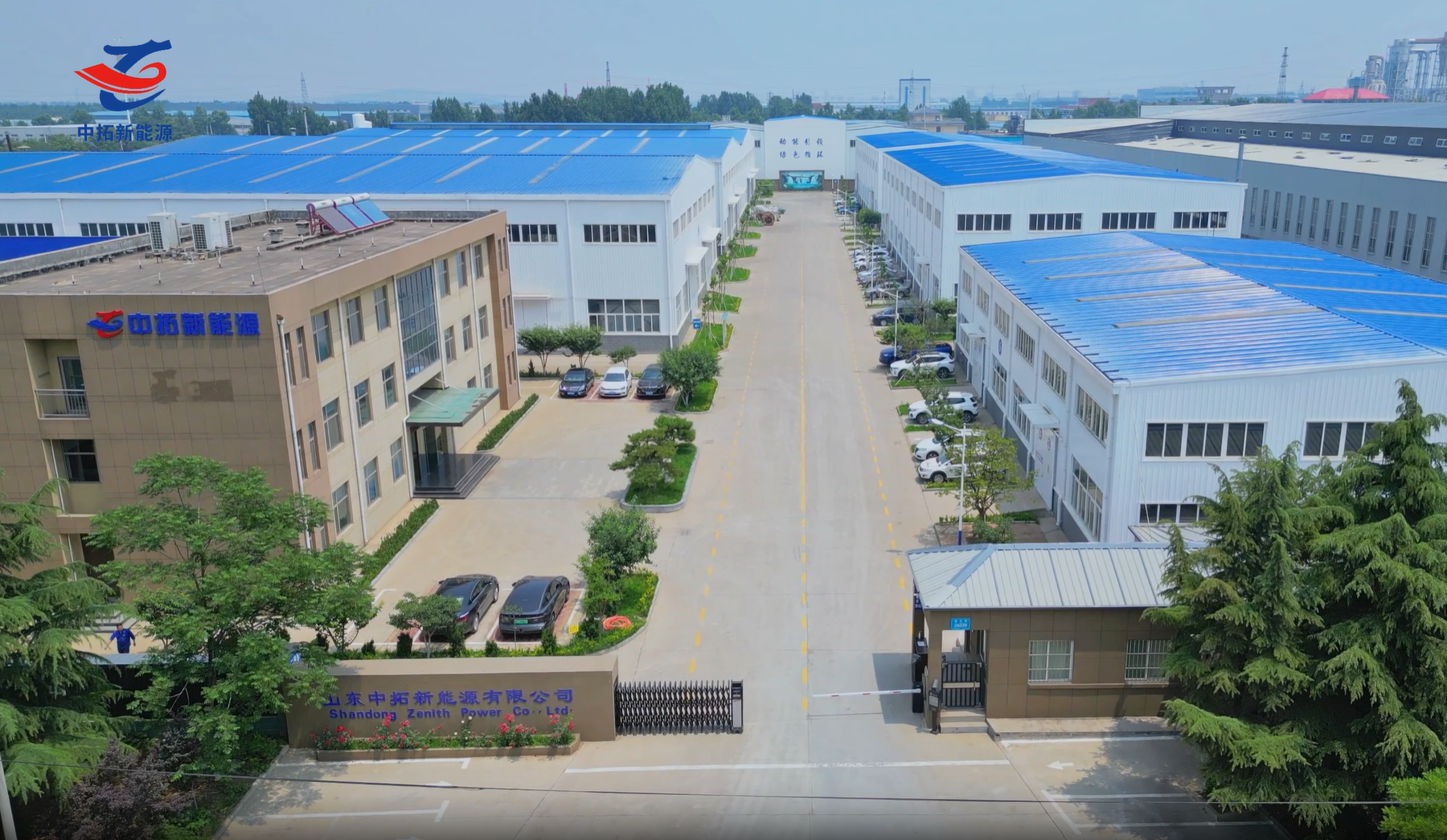 联系 - 热线
联系 - 热线
0531-69953988

 联系 - 热线
联系 - 热线
环能瓦斯发电机组:积碳难题的 “克星” 养成记
在能源利用的舞台上,环能瓦斯发电机组凭借将瓦斯气体转化为电能的高效能力,成为工业领域的 “绿色动力源”。然而,如同汽车发动机需要应对积碳困扰,这类设备在运行中也面临着积碳问题 —— 当燃料燃烧不充分或润滑油异常渗入燃烧室,碳基沉积物会逐渐堆积在活塞、气门、喷油器等部件表面,导致设备功率下降、油耗增加,甚至引发部件磨损与故障。要让环能瓦斯发电机组始终保持 “清爽状态”,需要从燃料管理、燃烧优化、润滑维护等多个维度构建一套科学的积碳防御体系。
On the stage of energy utilization, the environmental energy gas generator set has become a "green power source" in the industrial field due to its efficient ability to convert gas into electrical energy. However, just as car engines need to deal with the problem of carbon buildup, such equipment also faces the problem of carbon buildup during operation - when fuel combustion is insufficient or lubricating oil infiltrates the combustion chamber abnormally, carbon based deposits will gradually accumulate on the surfaces of components such as pistons, valves, and injectors, leading to a decrease in equipment power, an increase in fuel consumption, and even component wear and failure. To keep the environmental energy gas generator set in a "clean state" at all times, it is necessary to build a scientific carbon deposition defense system from multiple dimensions such as fuel management, combustion optimization, lubrication maintenance, etc.
燃料的洁净度是预防积碳的第一道防线。瓦斯气体中可能含有粉尘、硫化物、水蒸气等杂质,若未经严格处理直接燃烧,粉尘会成为积碳的核心载体,硫化物燃烧后生成的酸性物质会加剧部件腐蚀,而水蒸气与碳颗粒结合易形成黏性积垢。因此,燃料进入发动机前,需经过多级过滤与干燥处理:首先通过旋风分离器或布袋除尘器去除较大颗粒杂质,再利用精密滤芯(精度通常≤5 微米)过滤细微粉尘,确保进入燃烧室的气体洁净度达标;针对高湿度瓦斯,需配置冷凝式脱水装置或分子筛干燥器,将气体露点温度控制在 40℃以下,减少水蒸气对燃烧环境的影响。此外,定期对燃料管道进行吹扫清洁,避免管道内壁残留的油污与杂质随气体进入燃烧室,从源头降低积碳生成的 “原材料”。
The cleanliness of fuel is the first line of defense against carbon buildup. Gas may contain impurities such as dust, sulfides, and water vapor. If burned directly without strict treatment, dust will become the core carrier of carbon deposition. The acidic substances generated after sulfide combustion will exacerbate component corrosion, while water vapor combined with carbon particles can easily form viscous scale. Therefore, before entering the engine, the fuel needs to undergo multi-stage filtration and drying treatment: first, larger particle impurities are removed through a cyclone separator or bag filter, and then fine dust is filtered using a precision filter element (usually with an accuracy of ≤ 5 microns) to ensure that the cleanliness of the gas entering the combustion chamber meets the standard; For high humidity gas, it is necessary to configure a condensing dehydration device or molecular sieve dryer to control the dew point temperature of the gas below 40 ℃ and reduce the impact of water vapor on the combustion environment. In addition, regular purging and cleaning of fuel pipelines are carried out to prevent residual oil and impurities on the inner walls of the pipelines from entering the combustion chamber with the gas, thereby reducing the "raw materials" generated by carbon deposition from the source.
燃烧过程的优化是减少积碳的关键环节。积碳本质上是燃料不完全燃烧的产物,与燃烧温度、空燃比、喷油雾化效果等参数密切相关。环能瓦斯发电机组需通过精准控制燃烧条件,让燃料充分燃烧:一是合理调整空燃比,通过氧传感器实时监测燃烧废气中的氧含量,确保空气与瓦斯的混合比例维持在理论燃烧值附近(通常过量空气系数控制在 1.05-1.15),避免因空气不足导致燃料裂解产生游离碳;二是提升喷油器雾化性能,定期对喷油器进行拆检清洗,清除喷嘴孔内的结焦物,确保燃油以细密雾状喷出,与瓦斯气体均匀混合,同时检查喷油压力是否符合设计标准(一般为 0.3-0.5MPa),压力不足会导致雾化不良;三是维护燃烧室密封性,定期检查活塞环弹性与气门密封面状态,活塞环磨损或气门漏气会导致燃烧压力下降、温度不均,局部低温区域易形成积碳,因此需及时更换老化的活塞环,对气门座圈进行研磨修复,确保燃烧室在压缩冲程保持良好的密闭性。
The optimization of the combustion process is a key step in reducing carbon deposition. Carbon deposition is essentially a product of incomplete combustion of fuel, closely related to parameters such as combustion temperature, air-fuel ratio, and fuel injection atomization effect. The environmental energy gas generator set needs to accurately control the combustion conditions to ensure full combustion of fuel: firstly, adjust the air-fuel ratio reasonably, monitor the oxygen content in the combustion exhaust gas in real time through oxygen sensors, and ensure that the mixing ratio of air and gas is maintained near the theoretical combustion value (usually the excess air coefficient is controlled at 1.05-1.15), to avoid fuel cracking and free carbon production due to insufficient air; The second is to improve the atomization performance of the fuel injector, regularly inspect and clean the injector, remove the coking material in the nozzle hole, ensure that the fuel is sprayed in a fine mist and evenly mixed with gas, and check whether the injection pressure meets the design standards (generally 0.3-0.5MPa). Insufficient pressure can lead to poor atomization; The third is to maintain the sealing of the combustion chamber. Regularly check the elasticity of the piston ring and the sealing surface of the valve. Wear of the piston ring or leakage of the valve can cause a decrease in combustion pressure, uneven temperature, and the formation of carbon deposits in local low-temperature areas. Therefore, it is necessary to replace the aging piston ring in a timely manner and grind and repair the valve seat ring to ensure good sealing of the combustion chamber during the compression stroke.
润滑系统的精细化管理能有效减少 “外来” 积碳的产生。发动机润滑油若窜入燃烧室,其基础油中的高分子烃类在高温下会裂解生成漆膜和积碳,因此需重点防止润滑油泄漏:首先选择黏度合适、清净分散性好的专用机油,根据设备运行温度(通常工作温度 80-105℃)选择 SAE 15W-40 或 20W-50 等级机油,其添加的清净剂能抑制积碳在活塞环区沉积;其次加强气门油封与活塞环组的维护,气门油封老化会导致润滑油沿气门杆渗入燃烧室,需定期检查油封弹性,发现硬化或裂纹及时更换;活塞环的端隙、侧隙若因磨损超标(如端隙超过 0.5mm),会造成缸壁润滑油上窜,因此需在设备保养时测量环隙,必要时更换活塞环组,同时检查缸套磨损情况,缸径圆度误差超过 0.05mm 时需进行镗缸修复,从机械结构上切断润滑油进入燃烧室的通道。
The refined management of lubrication systems can effectively reduce the generation of "foreign" carbon deposits. If engine lubricating oil enters the combustion chamber, the high molecular weight hydrocarbons in its base oil will crack and form paint films and carbon deposits at high temperatures. Therefore, it is important to prevent lubricating oil leakage: first, choose specialized engine oil with appropriate viscosity, good cleanliness and dispersibility, and select SAE 15W-40 or 20W-50 grade engine oil according to the operating temperature of the equipment (usually working temperature of 80-105 ℃). The added cleaning agent can suppress carbon deposition in the piston ring area; Secondly, strengthen the maintenance of valve oil seals and piston ring assemblies. Aging of valve oil seals can cause lubricating oil to seep into the combustion chamber along the valve stem. It is necessary to regularly check the elasticity of the oil seals and replace them promptly if hardening or cracks are found; If the end clearance and side clearance of the piston ring exceed the standard due to wear (such as end clearance exceeding 0.5mm), it will cause the lubricating oil on the cylinder wall to surge. Therefore, it is necessary to measure the ring clearance during equipment maintenance, replace the piston ring assembly if necessary, and check the wear of the cylinder liner. If the cylinder diameter roundness error exceeds 0.05mm, cylinder boring repair is required to cut off the passage for lubricating oil to enter the combustion chamber from the mechanical structure.

定期维护与积碳清除是保持设备 “健康” 的必要手段。即使采取了预防措施,长期运行仍会不可避免地产生少量积碳,因此需制定科学的保养周期:运行 500-1000 小时后,对发动机进行可视化积碳检测,通过内窥镜观察活塞顶部、气门背部的积碳程度,轻度积碳(厚度<1mm)可通过添加燃油清净剂(主要成分为聚醚胺)进行运行中清洗,清净剂能吸附积碳颗粒并随废气排出;中度积碳(厚度 1-3mm)需拆解清洗,使用超声波清洗机对喷油器、进气歧管进行深度清洁,用软质刮刀(避免金属工具划伤部件)去除活塞顶和气门座的积碳,清洗后检查部件表面是否有烧蚀或裂纹;重度积碳(厚度>3mm)或伴有部件磨损时,需对发动机进行大修,更换受损的活塞、气门等零件。此外,每次保养时需检查空滤器阻力(正常压降<2kPa),阻力过高会导致进气不足,间接引发燃烧不充分,需及时更换滤芯。
Regular maintenance and carbon removal are necessary means to maintain the "health" of equipment. Even if preventive measures are taken, long-term operation will inevitably produce a small amount of carbon deposits, so a scientific maintenance cycle needs to be established: after running for 500-1000 hours, the engine should be visually inspected for carbon deposits, and the degree of carbon deposits on the top of the piston and the back of the valve should be observed through an endoscope. Mild carbon deposits (thickness<1mm) can be cleaned during operation by adding fuel cleaning agents (mainly composed of polyetheramine), which can absorb carbon particles and be discharged with exhaust gas; Moderate carbon deposits (thickness 1-3mm) need to be disassembled and cleaned. Use an ultrasonic cleaning machine to deeply clean the fuel injector and intake manifold, and use a soft scraper (to avoid scratching the parts with metal tools) to remove the carbon deposits on the piston top and valve seat. After cleaning, check whether there is burn or crack on the surface of the parts; When there is severe carbon deposition (thickness>3mm) or accompanied by component wear, the engine needs to be overhauled by replacing damaged parts such as pistons and valves. In addition, during each maintenance, it is necessary to check the resistance of the air filter (normal pressure drop<2kPa). Excessive resistance can lead to insufficient intake, indirectly causing incomplete combustion, and the filter element needs to be replaced in a timely manner.
运行中的状态监控与负荷管理,能动态预防积碳生成。环能瓦斯发电机组应避免长期在低负荷(<30% 额定功率)或超负荷(>110% 额定功率)状态下运行:低负荷时,发动机缸内温度偏低(低于 800℃),燃料燃烧不完全,且活塞环与缸套润滑不良,易导致积碳快速堆积;超负荷时,燃料供应量超过燃烧能力,未燃烧的燃油附着在缸壁上,高温下转化为坚硬积碳。理想的运行负荷应保持在 60%-90% 额定功率区间,此时缸内温度稳定在 900-1100℃,既能保证燃料充分燃烧,又能让润滑油在合适黏度下发挥作用。同时,监控排气温度(正常范围 450-650℃),排气温度异常偏低可能预示燃烧不充分,需排查空燃比或喷油器故障;温度过高则可能导致积碳烧结变硬,增加清除难度。
State monitoring and load management during operation can dynamically prevent carbon deposition. Environmental energy gas generator units should avoid long-term operation under low load (<30% rated power) or overload (>110% rated power) conditions: at low load, the engine cylinder temperature is low (below 800 ℃), fuel combustion is incomplete, and poor lubrication of piston rings and cylinder liners can easily lead to rapid accumulation of carbon deposits; When overloaded, the fuel supply exceeds the combustion capacity, and unburned fuel adheres to the cylinder wall, transforming into hard carbon deposits at high temperatures. The ideal operating load should be maintained within the range of 60% -90% rated power, with a stable cylinder temperature of 900-1100 ℃, which can ensure full combustion of the fuel and allow the lubricating oil to function at an appropriate viscosity. At the same time, monitor the exhaust temperature (normal range 450-650 ℃). If the exhaust temperature is abnormally low, it may indicate insufficient combustion and require troubleshooting of air-fuel ratio or fuel injector faults; If the temperature is too high, it may cause carbon deposition and sintering to harden, increasing the difficulty of removal.
本文由环能瓦斯发电机组友情奉献.更多有关的知识请点击:http://www.zhongtuopower.cn我们将会对您提出的疑问进行详细的解答,欢迎您登录网站留言.
This article is a friendly contribution from the analysis of gas generator sets For more information, please click: http://www.zhongtuopower.cn We will provide detailed answers to your questions. You are welcome to log in to our website and leave a message
业务分类
Business classification产品推荐
product recommendation联系方式
Contact Information

截屏,微信识别二维码